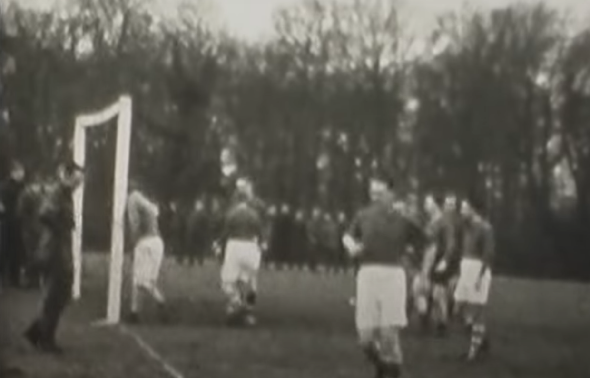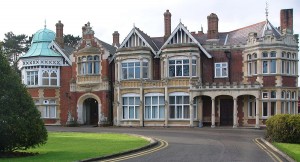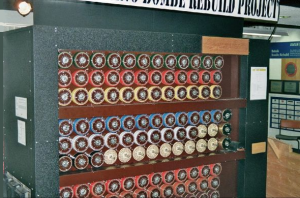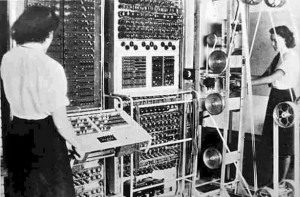No footage taken at Bletchley Park during WW2 is known to exist. However, an eleven-minute silent film recorded at an outstation nearby has now been published.
As most readers of this blog will know, Bletchley Park, a country estate to the northwest of London, during the second World War hosted a large industrial complex dedicated to breaking ciphers.
Bletchley Park
In January 1945, at the peak of the cryptanalysis efforts, nearly 10,000 persons, many of them women, were working at Bletchley Park and its outstations. The most important target of these operations was the German encryption machine Enigma, which could be solved with a special machine named “Bombe” (also known as “Turing Bombe” or “Turing-Welchman Bombe”). Over 200 specimen of this device were built.
Another important codebreaking machine operated at Bletchley Park was Colossus, the most sophisticated digital calculation machine of its time and a forerunner of today’s computers.
Colossus was designed to break the German teletype encrypter Schlüsselzusatz 40/42, better known as Lorenz machine. Ten Colossi were in use by the end of the war.
It goes without saying that everything going on at the Bletchley Park codebreaking facility was top secret. The workers were told that revealing information about their activities would result in them being shot. Following the “need-to-know” principle, most individuals at Bletchley Park were not even told what the purpose of their work was (though most were aware that it had to do with deciphering). Bletchley Park veterans, who were asked about their daily routines by historians decades later, typically couldn’t tell what had been happening behind the next door, let alone in other bulidings.
Considering the high secrecy standards, it comes as no surprise that the wartime history of Bletchley Park is not particularly well documented with photographs. When in 1993 the Colossus Rebuild Project started, only eight pictures of original machines were available (one of these is the one shown above).
The situation is even worse when it comes to film recordings. Not a single footage taken at Bletchley Park during the Second World War is known to exist. It appears that this important and fascinating chapter of world history is not documented on moving images.
An 11-minutes film compilation
A few days ago, Ralf Bülow and Elonka Dunin informed me about a sensational announcement from the Bletchley Park Trust. Apparently, eleven minutes of silent film material related to the codebreaking activities in WW2 were found and have now been published. This footage was not taken at Bletchley Park itself, but at Whaddon Hall, a nearby outstation. The film is believed to be a compilation of material recorded between 1939 and 1945.
Here’s a four-minute excerpt from the film:
Regrettably, this footage doesn’t show anything about codebreaking itself. However, it confirms something that is mentioned quite often in the literature (even in the 2001 movie Enigma with Kate Winslet it is said explicitly): Life conditions in Bletchley Park were good by wartime standards. The operators of the facility took serious efforts to keep their workers in good mood. Sport events, including soccer and cricket matches, as well as cultural activities, such as concerts and theater plays, took place on a regular basis. As can be seen in the film, some people (probably only the higher-ranked ones) went hunting.
Here’s an additional video providing explanations to the find:
David Kahn once said that the breaking of the Enigma in World War II was the greatest achievement in the history of cryptography. This film delivers an important puzzle piece in the documentation of this achievement.
Follow @KlausSchmeh
Further reading: The machine that broke the Enigma
Linkedin: https://www.linkedin.com/groups/13501820
Facebook: https://www.facebook.com/groups/763282653806483/






Letzte Kommentare